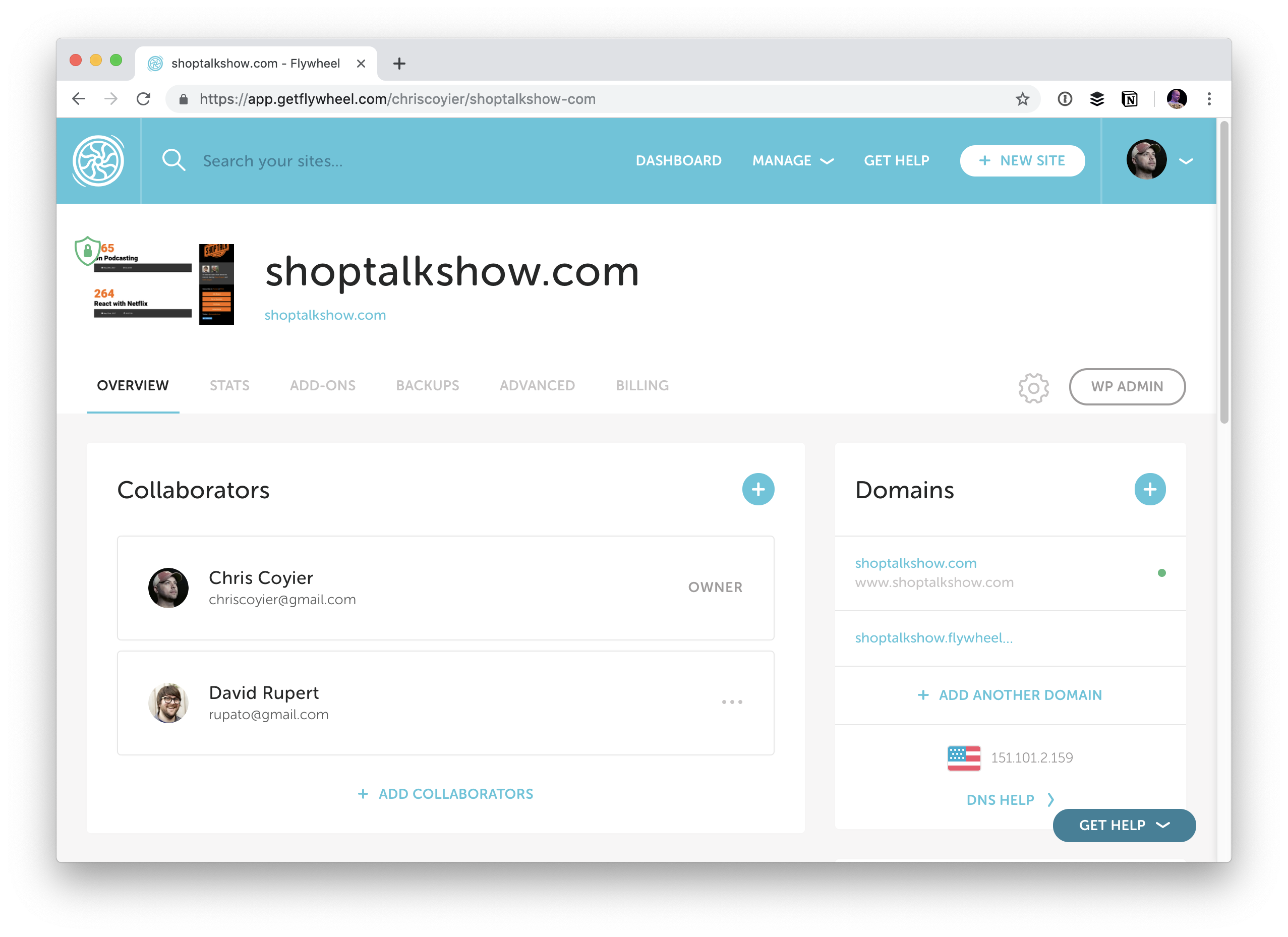Using Local with Flywheel
Have you seen Local by Flywheel? It’s a native app for helping set up local WordPress developer environments. I absolutely love it and use it to do all my local WordPress development work. It brings a lovingly designed GUI to highly technical tasks in a way that I think works very well. Plus it just works, which wins all the awards with me. Need to spin up a new site locally? Click a few buttons. Working on your site? All your sites are right there and you can flip them on with the flick of a toggle.
Local by Flywheel is useful no matter where your WordPress production site is hosted. But it really shines when paired with Flywheel itself, which is fabulous WordPress hosting that has all the same graceful combination of power and ease as Local does.
Just recently, we moved ShopTalkShow.com over to Local and it couldn’t have been easier.
Running locally.
Setting up a new local site (which you would do even if it’s a long-standing site and you’re just getting it set up on Flywheel) is just a few clicks. That’s one of the most satisfying parts. You know all kinds of complex things are happening behind the scenes, like containers being spun up, proper software being installed, etc, but you don’t have to worry about any of it.
(Local is free, by the way.)
The Cross-platform-ness is nice.
I work on ShopTalk with Dave Rupert, who’s on Windows. Not a problem. Local works on Windows also, so Dave can spin up site in the exact same way I can.
Setting up Flywheel hosting is just as clean and easy as Local is.
If you’ve used Local, you’ll recognize the clean font, colors, and design when using the Flywheel website to get your hosting set up. Just a few clicks and I had that going:

Things that are known to be a pain the butt are painless on Local, like making sure SSL (HTTPS) is active and a CDN is helping with assets.

You get a subdomain to start, so you can make sure your site is working perfectly before pointing a production domain at it.
I didn’t just have to put files into place on the new hosting, move the database, and cross my fingers I did it all right when re-pointing the DNS. I could get the site up and running at the subdomain first, make sure it is, then do the DNS part.
But the moving of files and all that… it’s trivial because of Local!
The best part is that shooting a site up to Flywheel from Local is also just a click away.
All the files and the database head right up after you’ve connected Local to Flywheel.

All I did was make sure I had my local site to be a 100% perfect copy of production. All the theme and plugins and stuff were already that way because I was already doing local development, and I pulled the entire database down easily with WP DB Migrate Pro.
I think I went from “I should get around to setting up this site on Flywheel.” do “Well that’s done.” in less than an hour. Now Dave and I both have a local development environment and a path to production.
The post Using Local with Flywheel appeared first on CSS-Tricks.
